The third leg of the Portland transportation bureau’s pandemic-related Safe Streets Initiative aims to allocate more space to people on busy streets. Their aptly named Busy Streets program is creating new bus platforms, wider sidewalks and expanded corners.
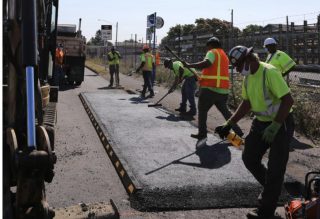
Last week PBOT installed the first bus platform on SE Washington and 80th in the Montavilla neighborhood. The new expanse of pavement will give TriMet Line 15 bus users more space to maintain a safe physical distance while they wait. More bus platforms are coming on SE Stark Street at 82nd, 90th, 92nd and 105th. Stark and Washington will also see several sections of expanded walkways.
Unlike with the Slow Streets and Healthy Business programs, there are no planned lane closures or driving access restrictions. PBOT is using a mix of new pavement, paint striping and physical barriers to re-allocate the space. Check out the graphics below for what the new wider corners and sidewalks will look like…
To choose locations, PBOT leaned on the groundbreaking work in their PedPDX Pedestrian Master Plan and chose to focus the first phase of projects on east Portland’s Montavilla and Gateway neighborhoods. “Both districts not only have heavy pedestrian traffic, but include lots of places that people walk to, including services and jobs, many of which may not provide teleworking as an option,” PBOT said in an announcement today. “These are also places that feature senior services, affordable housing, medical facilities, and transit.”
Advertisement
Corners will be expanded using paint-and-posts at 10 east Portland intersections:
- E Burnside Street at 99th and 148th avenues
- NE Halsey Street and 111th Avenue
- NE Prescott Street and 102nd Avenue
- SE Stark Street at 76th, 80th, and 148th avenues
- SE Washington Street at 76th, 80th, and 92nd avenues
You can view exact locations of all the Busy Street projects on PBOT’s Safe Streets Initiative map.
While PBOT says these projects are temporary, it seems there’d be no reason to erase them once the need for physical distancing subsides (if it ever does). East Portland is tragically car-centric and there’s an urgent need to re-allocate right-of-way away from car use and toward people on foot. Here’s to hoping these become permanent.
— Jonathan Maus: (503) 706-8804, @jonathan_maus on Twitter and jonathan@bikeportland.org
— Get our headlines delivered to your inbox.
— Support this independent community media outlet with a one-time contribution or monthly subscription.


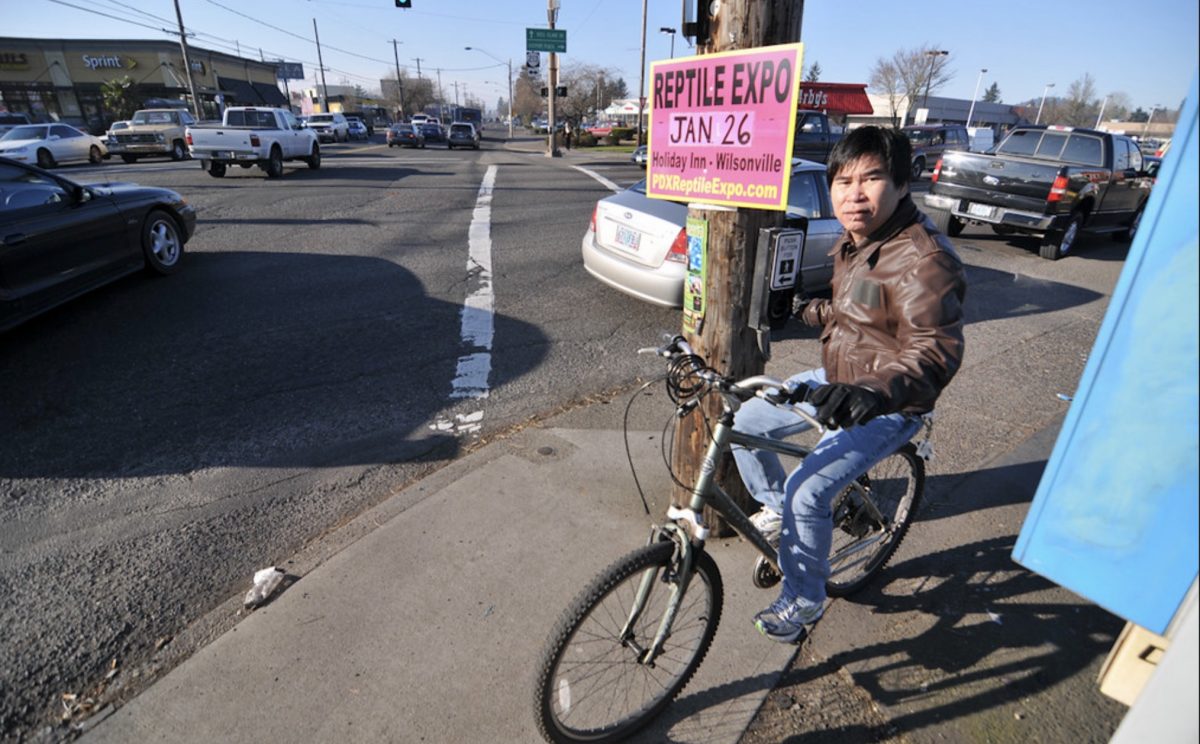
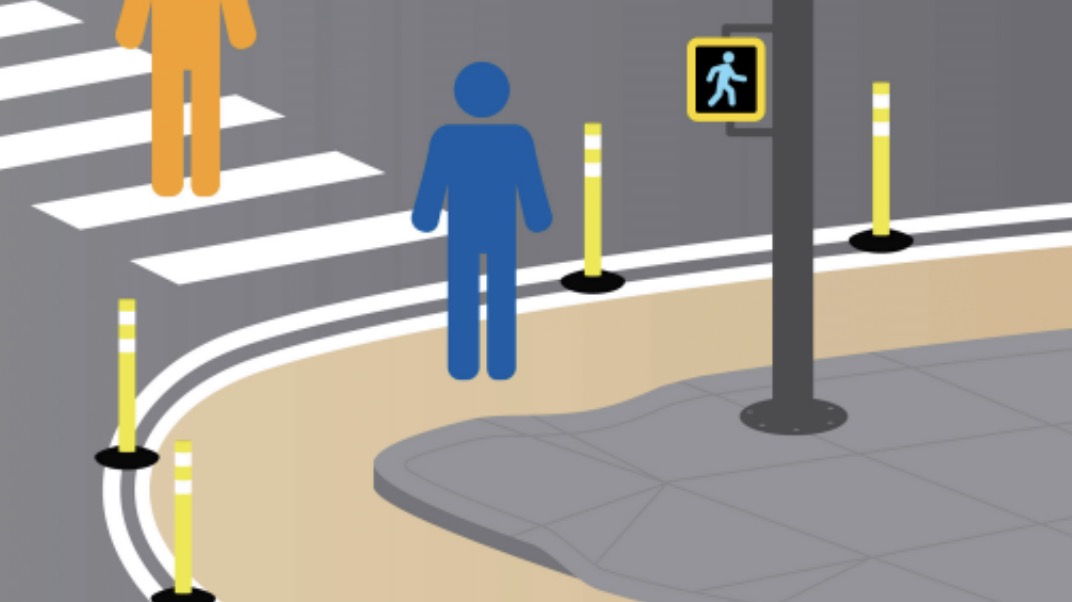
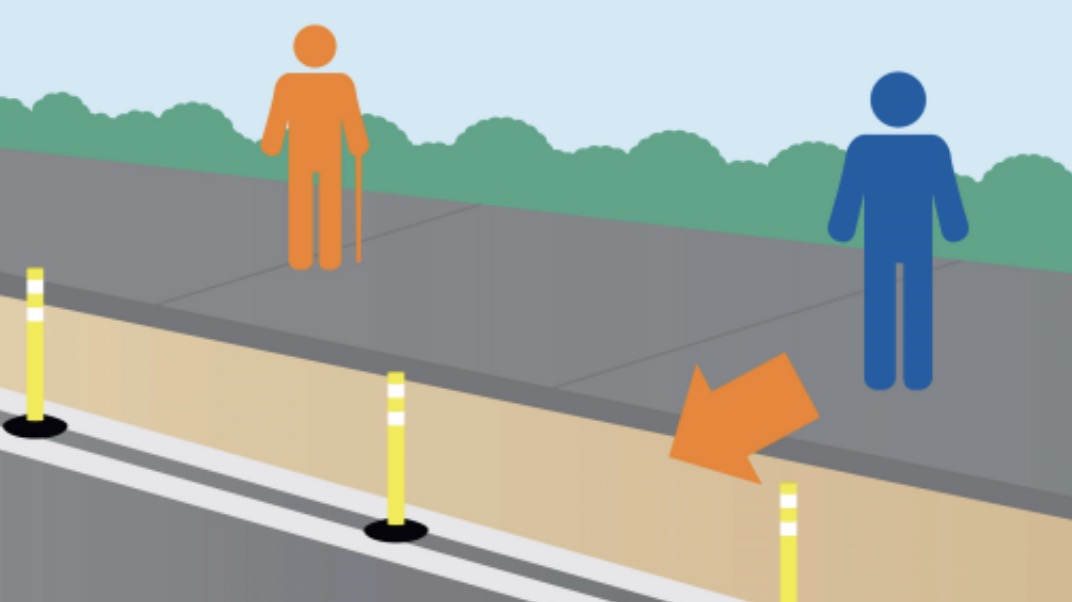

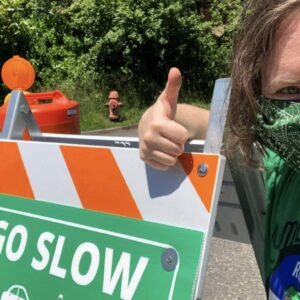
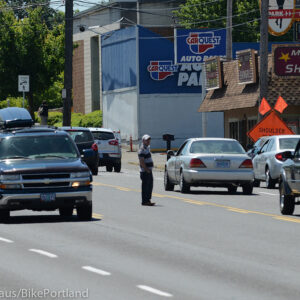
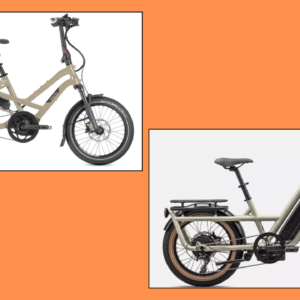
Thanks for reading.
BikePortland has served this community with independent community journalism since 2005. We rely on subscriptions from readers like you to survive. Your financial support is vital in keeping this valuable resource alive and well.
Please subscribe today to strengthen and expand our work.
If they are to become permanent, there needs to be some public process first. Implementing temporary projects by fiat is one thing, but making them permanent without consulting the public will only breed mistrust between PBOT and the public, making future work harder.
Please don’t advocate that PBOT take shortcuts with process; it will inevitably come back to bite us when either some project we don’t like is implemented by fiat, or some project we do like is scrapped because people are convinced PBOT is staffed by liars.
I agree. One of the main justifications PBOT used for bypassing public input with the Safe Streets temporary “local access only” designations for streets was that the designations were temporary. I agree that was the right decision, because time was of the essence. And the assurances that there’d be public input before making any permanent is what helped people accept the changes.
If any “temporary” projects are made permanent without public input, nobody will ever believe PBOT again if it says a project is temporary, and PBOT’s (important) ability to make quick changes will be hampered.
On the other hand, PBOT’s reputation in East Portland is one of wilful neglect for the past 30 years, and it really can’t get much worse. Even ODOT is liked more in East Portland.
Montevilla, north of Division and west of I-205, is a member of the SE Uplift League (SEUL) neighborhood coalition and is not technically part of the East Portland neighborhood coalition (EPCO) at all. There is no “Gateway neighborhood”. The Gateway urban renewal district is mostly in Hazelwood, a huge sprawling neighborhood of 24,000 that also includes the Adventist hospital, Glendoveer, and the David Douglas public high school complex, to 146th, but it’s also partly in the Woodland Park, Mill Park, and Parkrose Heights neighborhood associations. “148th & Division” is in the Centennial neighborhood association, the second largest in the city with over 25,000 residents that stretches all the way to Gresham. Parts of Stark are both in Hazelwood and in Mill Park, which also has the police station that was attacked recently.
East Portland is car centric for the very simple reason that the distances that people have to go are much further. Granted that road conditions are much more hostile out there, but fixing that wouldn’t change how the vast majority of people would get around.
A few specific areas can be made safer and infrastructure might make sense in areas large number of people live within walking distance of goods and services. But that’s far from the general situation out there.
Trying to push through aspirational infrastructure where it doesn’t make sense only breeds skepticism of alternative transport. Anyone who thinks the core is anything other than very friendly, easy, and convenient shouldn’t be expecting people who live further out in East to want do anything other than drive.
I think there is more to it. What you say is not false, but consider the basic security that a person feels in a metal box with locking doors. East Portland is a bit rougher than Inner SE (for instance). So, the car culture is strong there.
Would that change if the neighbor hoods became “walkable”? Assuming that walkable meant only that shops, parks and plazas were withing walking distance from homes. It’s an experiment that is well worth the effort… I’m looking at you City Hall.
What would you build in east Portland with the transportation funding we have?
Me, I’d encourage lots and lots of roundabouts and traffic circles, especially with Covid-19 helping to keep schools closed. Preferably every quarter mile or so. The biggest opponent to roundabouts in East Portland came from the David Douglas public school district, as their yellow school bus drivers have difficulty going around them (PBOT put one in at SE Stephen & 122nd, and had to remove it a week later at great cost back about 15 years ago when DDSD objected to it.)
Trim the dang bush – the person wouldn’t have to walk in the street then.
Anyone can submit a complaint to correct a nuisance, particularly one a property owner is responsible for correcting.
I think that can work well in areas with good sidewalks, where a nuisance like an overgrown bush is an exception. In areas like the ones in the photos, I think the complaint system may be less effective. Is it worth complaining about a bush, when a yard away you have a telephone pole cutting the sidewalk width in half, or at the corner you’ve got advertising signs in your face, and more poles centered right at the end of the crosswalk? And you’ve got 10 cars every block driving in and out of driveways across the sidewalk right in front of you? Personally, I wouldn’t bother when correcting the nuisance will only bring my walking route from horrible to horrible-minus-one-bush. And I’m speaking as someone who’s had some very good experiences when reporting things to PBOT.
Most East Portland sidewalks, where they exist that is, are narrower than the city standards, typically 7 feet from curb to the property line on major arterial roadways and less than that in residential areas. The city standard on arterial roadways is 12 feet, 18 feet downtown.